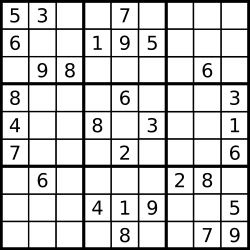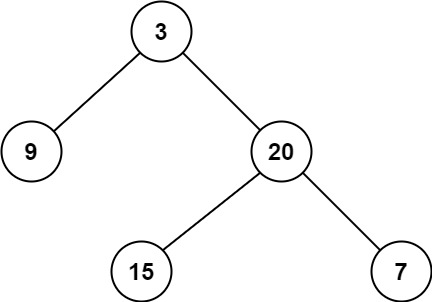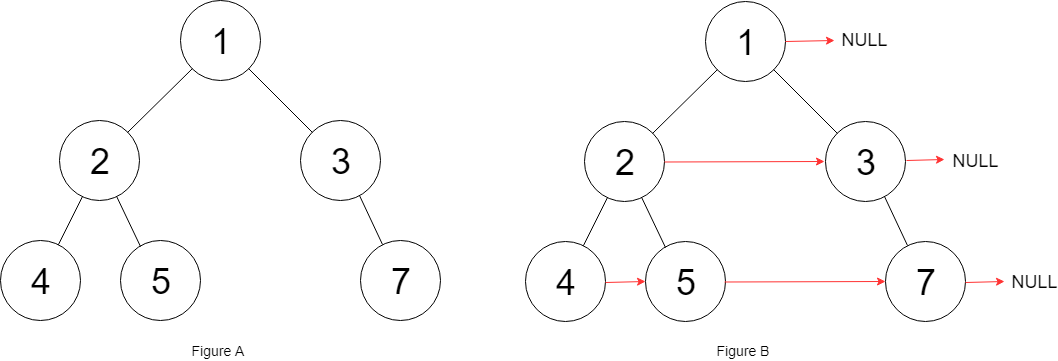Given a string s, partition s such that every substring of the partition is a palindrome.
Return all possible palindrome partitioning of s.
Example:
1 | Input: "aab" |
Given a string s, partition s such that every substring of the partition is a palindrome.
Return all possible palindrome partitioning of s.
Example:
1 | Input: "aab" |
Determine if a 9 x 9 Sudoku board is valid. Only the filled cells need to be validated according to the following rules:
1-9 without repetition.1-9 without repetition.3 x 3 sub-boxes of the grid must contain the digits 1-9 without repetition.Note:
Example 1:

1 | Input: board = |
Example 2:
1 | Input: board = |
Constraints:
board.length == 9board[i].length == 9board[i][j] is a digit or '.'.Given a string s containing only digits, return all possible valid IP addresses that can be obtained from s. You can return them in any order.
A valid IP address consists of exactly four integers, each integer is between 0 and 255, separated by single dots and cannot have leading zeros. For example, “0.1.2.201” and “192.168.1.1” are valid IP addresses and “0.011.255.245”, “192.168.1.312” and “192.168@1.1“ are invalid IP addresses.
Example 1:
1 | Input: s = "25525511135" |
Example 2:
1 | Input: s = "0000" |
Example 3:
1 | Input: s = "1111" |
Example 4:
1 | Input: s = "010010" |
Example 5:
1 | Input: s = "101023" |
Constraints:
0 <= s.length <= 3000s consists of digits only.Given an absolute path for a file (Unix-style), simplify it. Or in other words, convert it to the canonical path.
In a UNIX-style file system, a period . refers to the current directory. Furthermore, a double period .. moves the directory up a level.
Note that the returned canonical path must always begin with a slash /, and there must be only a single slash / between two directory names. The last directory name (if it exists) must not end with a trailing /. Also, the canonical path must be the shortest string representing the absolute path.
Example 1:
1 | Input: "/home/" |
Example 2:
1 | Input: "/../" |
Example 3:
1 | Input: "/home//foo/" |
Example 4:
1 | Input: "/a/./b/../../c/" |
Example 5:
1 | Input: "/a/../../b/../c//.//" |
Example 6:
1 | Input: "/a//b////c/d//././/.." |
Given a 2D board containing 'X' and 'O' (the letter O), capture all regions surrounded by 'X'.
A region is captured by flipping all 'O's into 'X's in that surrounded region.
Example:
1 | X X X X |
After running your function, the board should be:
1 | X X X X |
Explanation:
Surrounded regions shouldn’t be on the border, which means that any 'O' on the border of the board are not flipped to 'X'. Any 'O' that is not on the border and it is not connected to an 'O' on the border will be flipped to 'X'. Two cells are connected if they are adjacent cells connected horizontally or vertically.
Given a binary tree containing digits from 0-9 only, each root-to-leaf path could represent a number.
An example is the root-to-leaf path 1->2->3 which represents the number 123.
Find the total sum of all root-to-leaf numbers.
Note: A leaf is a node with no children.
Example:
1 | Input: [1,2,3] |
Example 2:
1 | Input: [4,9,0,5,1] |
Given two words (beginWord and endWord), and a dictionary’s word list, find the length of shortest transformation sequence from beginWord to endWord, such that:
Note:
Example 1:
1 | Input: |
Example 2:
1 | Input: |
A linked list is given such that each node contains an additional random pointer which could point to any node in the list or null.
Return a deep copy of the list.
The Linked List is represented in the input/output as a list of n nodes. Each node is represented as a pair of [val, random_index] where:
val: an integer representing Node.valrandom_index: the index of the node (range from 0 to n-1) where random pointer points to, or null if it does not point to any node.Example 1:

1 | Input: head = [[7,null],[13,0],[11,4],[10,2],[1,0]] |
Example 2:

1 | Input: head = [[1,1],[2,1]] |
Example 3:

1 | Input: head = [[3,null],[3,0],[3,null]] |
Example 4:
1 | Input: head = [] |
Constraints:
-10000 <= Node.val <= 10000Node.random is null or pointing to a node in the linked list.Given a binary tree, find its minimum depth.
The minimum depth is the number of nodes along the shortest path from the root node down to the nearest leaf node.
Note: A leaf is a node with no children.
Example 1:

1 | Input: root = [3,9,20,null,null,15,7] |
Example 2:
1 | Input: root = [2,null,3,null,4,null,5,null,6] |
Constraints:
[0, 104].-1000 <= Node.val <= 1000Given a binary tree
1 | struct Node { |
Populate each next pointer to point to its next right node. If there is no next right node, the next pointer should be set to NULL.
Initially, all next pointers are set to NULL.
Follow up:
Example 1:

1 | Input: root = [1,2,3,4,5,null,7] |
Constraints:
6000.-100 <= node.val <= 100